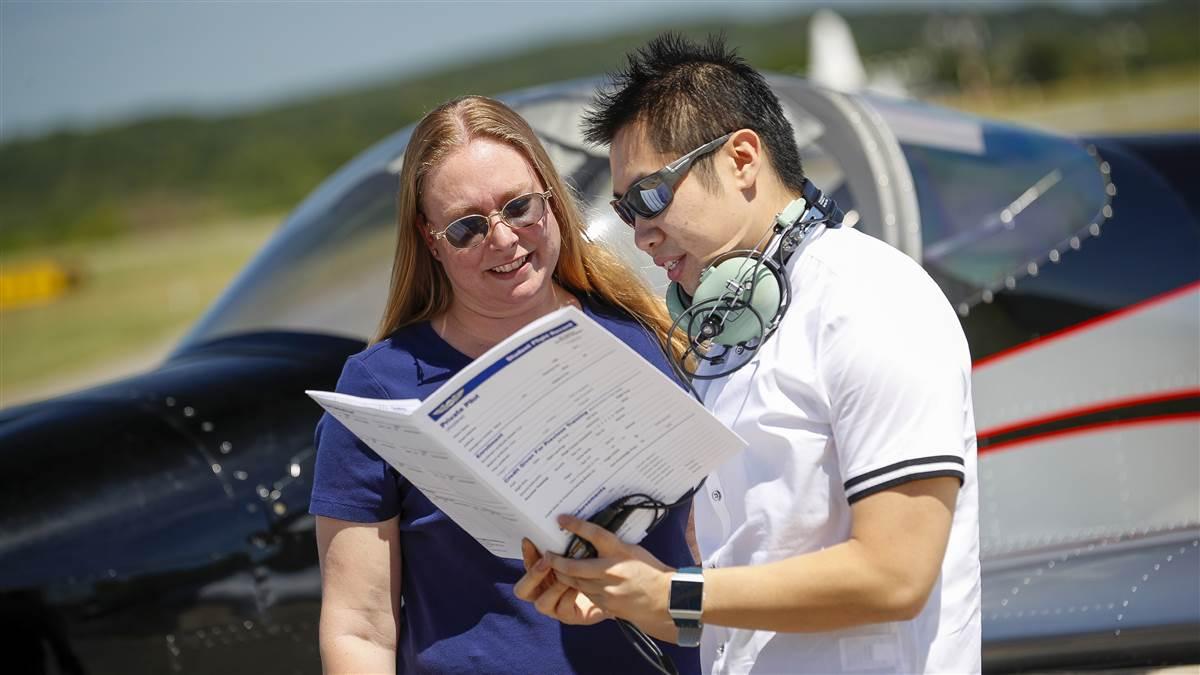Instructor Report: Student/instructor dynamics
Finding the best CFI for you
By John W. Olcott
Becoming a successful aviator is shaped significantly by the student’s flight instructor. Yet rarely, if ever, are students given a choice of who will teach them the fundamentals of flight.

Even if such an option were commonplace, it is doubtful that a fledgling aviator would know what questions to ask or how to make a knowledgeable selection. Furthermore, each student is unique, and within certain general boundaries each student learns differently. Instructors also are individuals with their own teaching styles and proficiency. What are the chances that any student will be assigned the most effective CFI for him or her?
A better question is what can students do to help their CFIs be effective teachers?
The dynamic interaction between student and CFI shapes the learning experience. Additionally, students and flight instructors are teammates in the same sense that coaches and players are part of the same team, and like teams in general they need to share a common goal. For CFIs and their students, the common goal is development of a safe and productive aviator. Achieving that goal is facilitated when student and instructor communicate openly and with candor.
Before launching a course of training, student and instructor should discuss what each party wants to achieve, what motivated them to pursue their goals, and how working together can be mutually beneficial.
Your CFI will be more effective in teaching you when you candidly discuss why you want to become a certificated aviator and what you expect from your instruction. Knowing more about you, your instructor can better relate the tasks being taught to your goals, thereby leveraging your motivation to be a pilot.
Your CFI will be more effective when you candidly discuss what you expect from your instruction.You will be a better learner when you understand what the course of training requires in terms of preparation, time, and dedication. Ask your CFI to explain the relationship between curriculum, syllabus, and individual lesson plans, so that you have awareness of where you are and where you will be, subsequently, as you move from fledgling to certificate pilot. Know what you will be addressing with each lesson before you go aloft. While it may seem arrogant to do so, insist on discussing each lesson plan with your CFI prior to preflight. Flying requires planning; learning to fly requires lesson plans.
While not inherently difficult, learning to fly also requires focus. You need to “put skin in the game” since even the best CFI can’t learn for you. The student who enters training knowing what to expect and how effort will be rewarded is more likely to have a satisfactory experience.
Engaging your CFI in conversation prior to starting flight lessons will expand your training horizon and stimulate your motivation. Becoming an aviator is a fulfilling experience that provides an opportunity for personal accomplishment and self-fulfillment. You want your CFI to be empathetic to those holistic rewards of flight—the self-awareness that you will achieve from learning to fly and the greater vistas open for exploration. Caution: Be wary of the CFI who is more interested in putting time in his or her logbook at your expense than being a professional educator teaching you to fly.
Discuss your learning traits with your CFI. No two students are identical, and everyone has their preferred ways of learning. Some students learn best by reading material from manuals; they are called “visual” learners. Others are called “auditory” learners because they are particularly adept at retaining what they hear. “Kinesthetic” learners benefit greatly by doing things. Students should discuss their preferences with their instructor before launching a program of flight training to identify learning style—an area far too important to be discovered by trial and error.
Teaching style is also critical. CFIs need to adopt to the delivery methods that best influence the student. Some students respond to the firm hand of a disciplinarian who points out each error and deviation from acceptable standards; others are intimidated by such techniques. Students should be forthright with their CFI. Without a candid, open discussion of styles that are effective, valuable teaching time and student dollars will be lost, frustrations will increase, and flight training will be unsatisfactory.
Students can help their CFIs be effective teachers by engaging them in sufficient dialogue to find compatible learning and teaching styles, shared objectives and realistic expectations for success. A candid discussion with your assigned CFI will go a long way toward ensuring favorable student/instructor dynamics. FT
John W. Olcott is an airline transport pilot, CFII, and remote pilot, as well as former president of the National Business Aviation Association.


